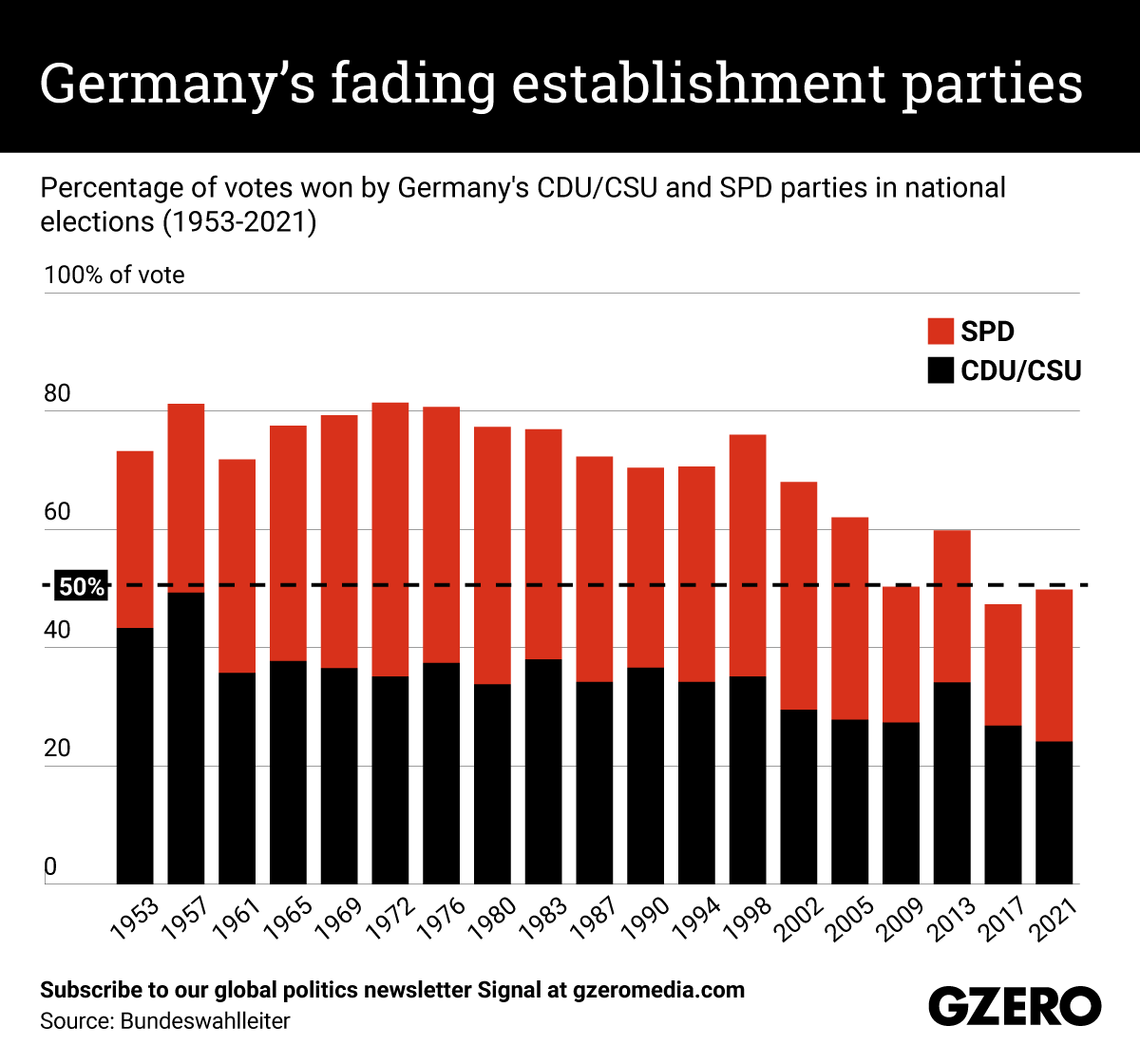September 27, 2021
Germany's conservative CDU/ CSU party and the center-left SPD have dominated German politics since the 1950s. For decades, they have vied for dominance and often served in a coalition together, and have been known as the "people's parties" – a reference to their perceived middle-of-the-road pragmatism and combined broad appeal to the majority of Germans. But that's all changing, as evidenced by the fact that both performed poorly in this week's election, shedding votes to the minority Greens and pro-business Free Democrats. We take a look at the CDU/CSU and SPD's respective electoral performance over the past 60 years.
More For You
Most Popular
Think you know what's going on around the world? Here's your chance to prove it.
Police officers pass a burnt police armoured personnel carrier after gunmen kidnapped several people from an orphanage in a mountainous community that has been under deadly attacks by armed gangs since the start of this year, on the outskirts of Port-au-Prince, in Kenscoff, Haiti August 4, 2025.
REUTERS/Fildor Pq Egeder
Last fall, Haiti created a transitional presidential council tasked with regaining control over the gang-ravaged Caribbean country and ushering in elections by February 2026.
© 2025 GZERO Media. All Rights Reserved | A Eurasia Group media company.
